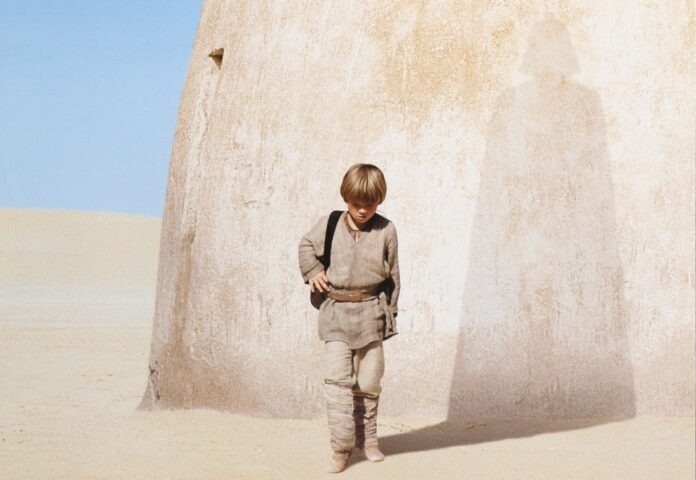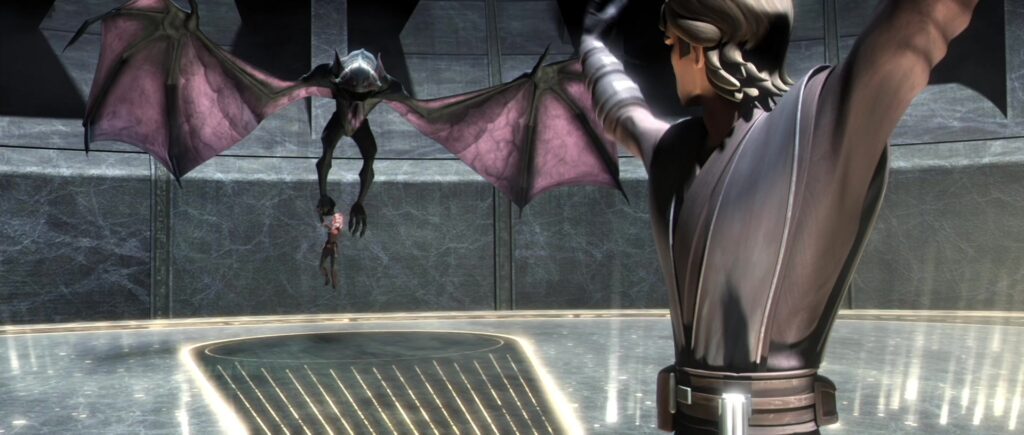The tragedy of Anakin Skywalker, or one could argue the Skywalker family, is transformed into a story of Darth Vader’s redemption over the course of six films. This story of tragedy, Anakin’s fall in one trilogy contrasted by the redemption of Vader in another, is also expanded in a unified canon of literature, film/animation, and other media which underscore a much bigger point: the tragedy contrasted by hope is not solely Anakin’s story. Nor are the actors who played a role his downfall and the ones who helped him through the glacial path to redemption singular or always existing in the physical world. Anakin’s journey to become Darth Vader was a long, winding road; and, the path back even longer, more elusive and the redeemed himself often wasn’t consciously walking. In his downfall, Anakin participated in rejecting love and the goddess to his downfall. In the redemption of Darth Vader he found both. The departure from the feminine divine and its restoration began a cycle in the Skywalker Saga we’ve only seen partially fulfilled but for our purposes we will focus on Anakin’s loss of the goddess and his steps to find her again as Darth Vader.
First, we have to loosely define the role of the goddess and the feminine divine. Go to Google and you can find a rabbit hole of different interpretations or definitions. The great thing about the notion of goddess and the divine feminine is she does not require a rigid, monotheist interpretation or the dogma which would accompany. The goddess is everywhere, from soil to stars, giving life. But as we explore this idea of the goddess and the feminine divine in Star Wars it will be useful to find an interpretation to give root and foundation to ideas and archetypes explored.
George Lucas looked to Joseph Campbell’s lectures and essays while conceiving this story, it’s intuitive to turn to a specific collection of these in his Goddesses: Mysteries of the Feminine Divine. In the opening pages, Campbell posits one of his interpretations of Paleolithic depictions of the goddess on cave walls, which he calls “the principal mythological role of the feminine principle”.
She gives birth to us physically, but She is the mother too of our second birth––our birth as spiritual entities. This is the basic meaning of the motif of the virgin birth, that our bodies are born naturally, but at a certain time there awakens in us our spiritual nature, which is the higher human nature, not that which simply duplicates the world of animal urges, of erotic and power drives and sleep. Instead, there awakens in us the notion of a spiritual aim, a spiritual life: an essentially human, mystical life to be lived above the level of food, of sex, of economics, politics, and sociology. In this sphere of the mystery dimension the woman represents the awakener, the giver of birth in that sense. In these caves where the boys went to be initiated , to be transformed from the children of their physical mothers into the children of the cosmic Mother, in the womb of the Earth, the experienced their symbolic rebirth.
The “virgin birth” is a tired trope found in literature and monotheist religion, but it is the story of Anakin’s conception and birth, therefore it must be unpacked in Anakin’s first encounter with the goddess: Shmi Skywalker, his mother.
One of the most problematic elements of the “virgin birth” trope is the reduction of the goddess or feminine to their ability to give birth, simplifying their complexity to that of a sacrificial vessel or conduit existing only to deliver the implied overriding virtue in their offspring. The preservation of declarative virtue can be a very stifling and dangerous thing to our heroes in Star Wars, especially what we see with Anakin. In this case, the virtue of unconditional love a parent bestows upon their child is one which will later serve the better of Anakin’s proclivities. August’s performance conveys Shmi has done everything she can to not only protect Anakin from the horrific bondage of slavery but has nurtured him as a being in the universe, capable of doing good for his other fellow beings.
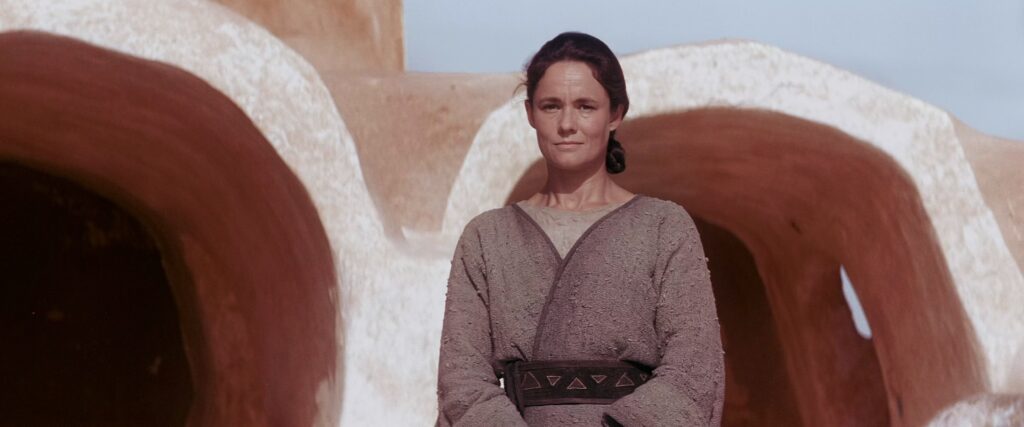
Shmi is also present at an intersection between two very powerful forces: Padmé Amidala, the second encounter with the goddess for Anakin; and, the Jedi, whose dogma ultimately tells Anakin to reject some of the most vital aspects of the goddess. Jedi Master Qui-Gon Jinn sees great power and an even greater virtue in Anakin, that being his fulfillment of an ancient prophecy, the Chosen One. Qui-Gon is so driven by this possibility of Anakin’s imagined potential he’s willing to break the bonds of a parent from a child, cutting Anakin off from the goddess. This type of separation is the norm for Jedi but it’s acknowledged later this was an incredibly abnormal thing for Qui-Gon to do because Anakin had already formed a significant bond with his mother and he was…old. Padmé sees Anakin for who he is, a person (which he reminds her of his humanity when she mistakenly refers to him as a slave) willing to help his fellow beings, not being compelled by anything other than altruism. Qui-Gon recognizes these qualities as well but conflates them with a vague prophecy of the Force we know he’s been following for years from Claudia Gray’s Master & Apprentice. In fact, nine-year-old Anakin is a near perfect iteration of the what the Jedi strive to be.
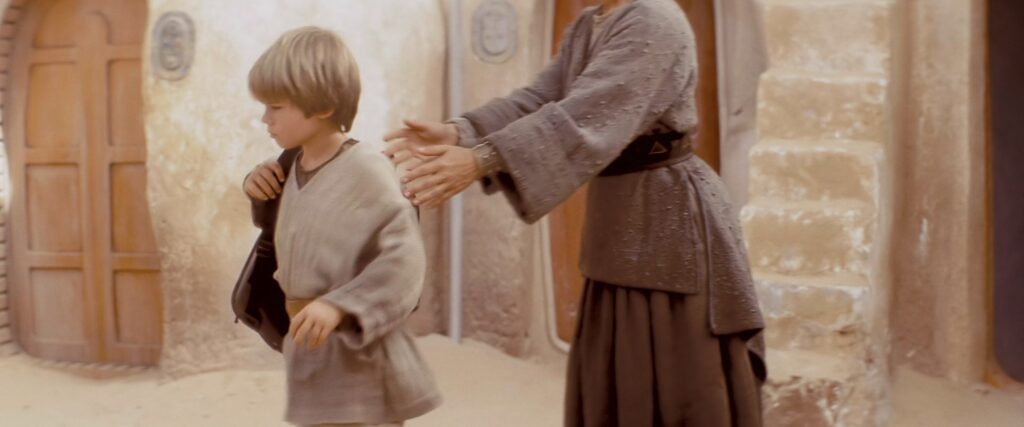
Qui-Gon eventually succeeds in freeing Anakin but is unable to free Shmi. She trusts Anakin will have guidance and protection under the Qui-Gon and the Jedi. Qui-Gon’s faith in her son likely helps her take a seemingly impossible leap of faith, as well as the alternative to keeping her son in a life of bondage. In The Phantom Menace, during their final goodbye, there is nothing victorious about Anakin’s departure. The combination of John Williams score, the performances of Pernilla August and Jake Lloyd, and uncertainty of mother and son ever reuniting make it an intentionally ominous scene constructed by Lucas. This is a pivotal moment, it is Anakin’s separation from the first archetypal goddess. Shmi devoted her life to instilling the good in Anakin. It’s important to point out how primed he is to continue to grow as an altruistic being despite the brutality of his environment. The guidance of his mother not only goes missing, the spiritual path he’s been on is substantially altered as soon as he’s introduced to the Jedi Order.
When the Jedi Order encounter Anakin, whose internal dialogue is running counter to their own standards of what emotions the boy should or should not display, they almost seem afraid of him. Yoda views the natural grief a child would feel with little sympathy or empathy, instead casting that grief as a liability and into its base mode of attachment. Anakin certainly does fit into this mold of conflating the fear of losing attachment and possession to love, only it’s after the Jedi have tried to train the sense of love out of him.
In A Little Book On the Human Shadow, Robert Bly touches on the dangers of ignoring the emotions you are told to forget. There is darkness in everything but trying to ignore that can only spread to other emotions naturally occurring in the human psyche, until eventually the darkness consumes it entirely. He refers to this stuffing of emotions as a “bag” we carry with us from childhood on our journey to adulthood, to one day access them as an adult, when we’ll need them as tools to relate to others and the world around us..
From A Little Book On the Human Shadow:
We spend our life until we’re twenty deciding what parts of ourself to put into the bag, and we spend the rest of our lives trying to get them out again. Sometimes retrieving them feels impossible, as if the bag were sealed. Suppose the bag remains sealed––what happens then? A great nineteenth-century story has an idea about that. One night Robert Louis Stevenson work up and told his wife a bit of a dream he’d just had. She urged him to write it down; he did, and it became “Dr. Jekyll and Mr. Hyde”.
Jekyll and Hyde is a cautionary tale of the darkness presumed to be inside all of us. This story won’t be used here as a lens for discussing Anakin’s descent into his own darkness but Bly makes an effective point about repressing in a “sealed bag”. Emotional experience can be difficult but it can also be a teaching, meditative, and healing experience. It’s hard enough to be equipped enough to deal with the range of emotions as a young person but being part of a community which demands you reject them must be especially confusing for Anakin. Anakin’s exception being he entered this order with the seeds of love already planted by his mother.
Like the little we know of Shmi’s life before The Phantom Menace, not much is known about Anakin’s life with the Jedi between the time he left Tatooine and when we meet him again on Coruscant ten years later, as young adult. Due to the rare act of defiance by Obi-Wan Kenobi against the Jedi Council, Anakin undertook an apprenticeship likely being vastly different than the one he would’ve experienced under Qui-Gon Jinn. Where Qui-Gon often deviated from the Jedi dogma in favor of serving the Living Force, Obi-Wan was often confounded why his master didn’t just follow their code. The archetype of the feminine divine, specifically love, would have still been absent from Anakin’s life under either master.
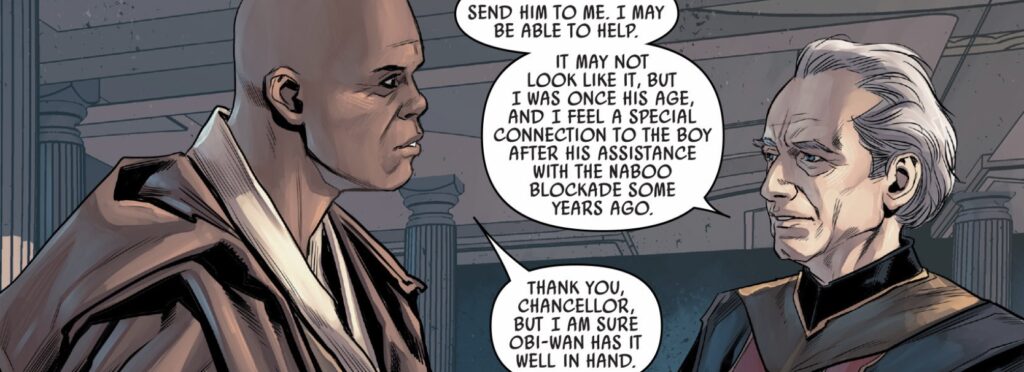
We do get a small glimpse Anakin as a younger teenager in Charles Soule’s comic series, Obi-Wan & Anakin, and we see the struggle with his emotions was not new in Attack of the Clones. The frame above is from the first issue of the series, with Anakin losing his cool as two Padawans mock his childhood as a slave. He actually summons their lightsabers, while dueling a training hologram he’s personally repurposed to resemble Darth Maul, and the weapons in half. While Obi-Wan quickly stops him and collects himself, Obi-Wan quickly intervenes. There are others watching, though.
Palpatine recognizes Anakin’s difficulty to control his emotions and he’s also aware of the unorthodox nature of how Anakin came to the Jedi. Even Palpatine can see the conflicted nature of Anakin’s emotional state and realizes how easily he’s rattled by it. This is the moment where his grooming of Anakin begins, a big part of that being Palpatine undercutting the Jedi dogma and focusing only as it suppresses Anakin’s natural desires. One of the aspects which makes Palpatine such a wretched being is how self aware he is of his true intentions. He’s a villain who doesn’t care whether he’s right or wrong but he knows the idea of virtue is in the eye of the beholder and this is the strategy he’ll formulate to shift Anakin’s perspective. He’ll corrupt Anakin’s perception of the goddess and have him fulfill everything the Jedi were concerned a younger Anakin’s sadness over leaving his mother would bring. The conflation of love and obsession, where the latter takes over, because it’s all the Jedi warned him about instead of teaching him about or allowing him to feel the latter, or balance of his own desires.
Palpatine is handed a perfect situation to continue stirring Anakin’s struggle of reconciling the feminine divine while trying to uphold the virtues of the Jedi. Senator Padmé Amidala survives an assassination attempt and through a number of political levers of which the chancellor is adept he’s able to have Anakin assigned as part of Padmé’s security, no doubt understanding the years of Jedi dogma will collide with his attempt to reconnect to the feminine divine. Palpatine knows the seal on the bag of emotions Anakin carries is tenuous.
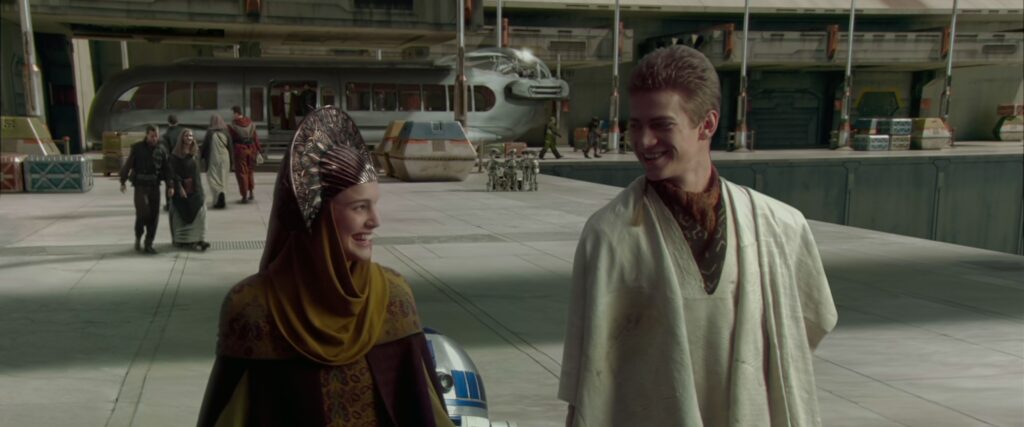
When Anakin reconnects with Padmé he’s also feeling the call of his first connection to the goddess, only these are calls of distress. Whether these dreams are the Force or his subconscious, Anakin suddenly feels his mother is in danger, just as he’s reconnecting and discovering a new connection to the divine feminine through his time with Padmé, not just due to his infatuation but due to the emotional wisdom she passes to him. The goddess is speaking to him through his mother and his newfound love in both the subconscious and the conscious.
As the story unfolds, he feels both his mother and Padmé call to him. His mother calls to him in his dreams and the intense love he feels for Padmé drive every major decision in Attack of the Clones. Eventually, both connections to the feminine divine will call out to Anakin in dreams but the archetypal goddess in Shmi calls out in his subconscious during his emotional maelstrom. While these visions of his mother in danger are disturbing, his master Obi-Wan Kenobi acknowledges them only as something which will pass in time, despite the clear distress it has on his student. Eventually these frequent dreams become too much for him and Anakin is driven to ignore the duty and dogma which kept him separate from his mother, choosing to set out looking for her.
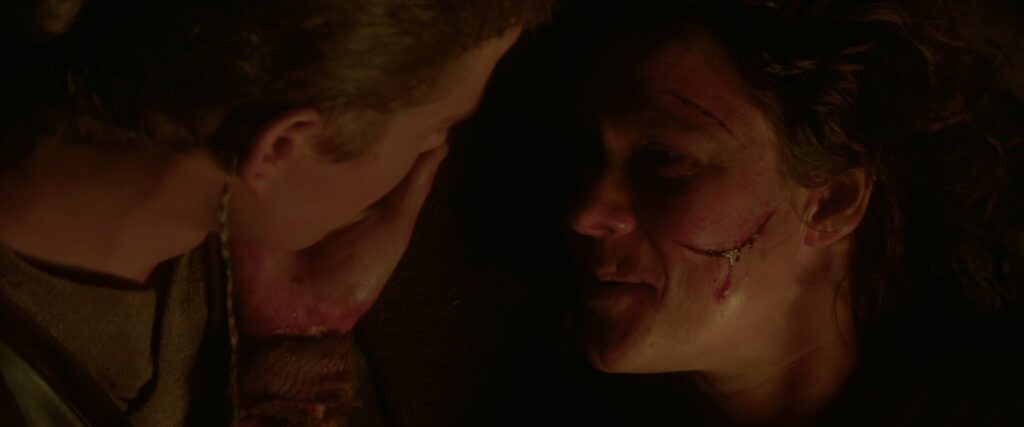
Anakin is joined in this journey by Padmé but when he sets out for the final journey to the reunion with his mother, it’s one he undertakes alone. Eventually he finds his mother, brutalized and on the edge of death. Struggling on her last breath, Shmi tries to tell Anakin she loves him but life leaves her mid-syllable as she is saying “love”. Immediately, a distillation of the prophecy the Jedi predicted plays out on screen. Cue the music of John Williams expressed through an almost violent chorus of strings, the enraged and disturbed expression from Hayden Christensen’s portrayal, and the imagery of Anakin cutting down those responsible for his mother’s death. As the Jedi told him, the attachment to love betrayed their teachings and Anakin unleashed a fury of dark impulses which simmered for years in the sealed, emotional tool bag.
This severs Anakin’s first connection to the feminine divine. There is no consolation for Anakin. The last memory of his mother before her death is that of his departure for the Jedi Order. The promise of seeing her and reconnecting gone, we see the seed of resentment toward the Jedi planted when Anakin later confesses his transgressions to Padmé, blaming his master for holding him back and vowing one day to use his powers to prevent death –– something forbidden by the Jedi, who also forbid love. Though his mother is gone and her symbolic place as a connection to the goddess, Padmé remains.
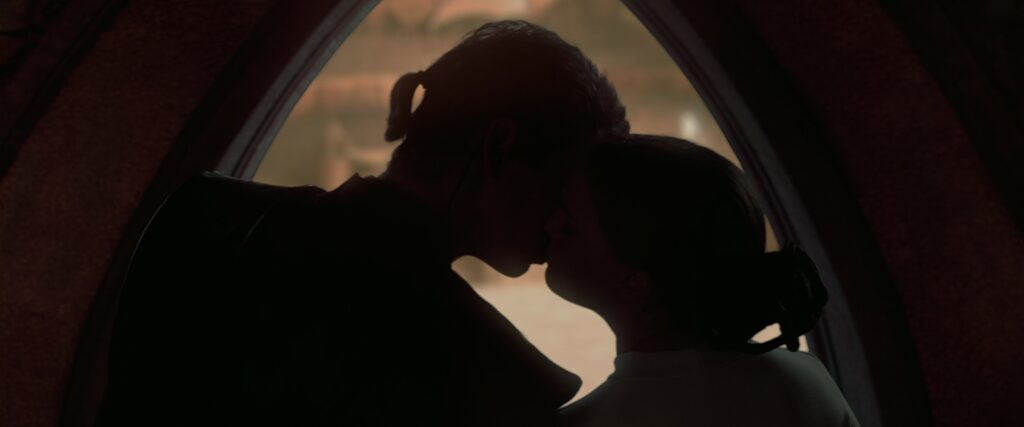
And it is, again, when facing death the union between Anakin and Padmé is codified in deep love and marriage. Facing down their demise at the hands of the Separatists in the darkness, Padmé confesses a love she’s harbored and hidden during their reconnection, just as they’re pulled into the light in one of the more stunning shots of the prequel. The silhouette of their union, a tender kiss which they both believe to be their last as John Williams’ “Across the Stars” rises from a tender motif in the background to a triumphant bellow as the two prepare to face death together.
Working together, they survive near death of their new union in love, which they ritually formalize in the sacrament of marriage. There are no more masks for them to wear, no more pretending to keep the bag of emotional tools sealed. The goddess found Anakin and now protects him once again but neither he or Padmé feel they have the luxury of fully forsaking their duties. While they may be naked to each other in their love and new marriage, the dark forces of war have returned to the galaxy and they are both needed as warriors in the fight. Anakin remains committed to the Jedi Order and Padmé to her work in the senate while existing in the duality of their marriage and their duty.
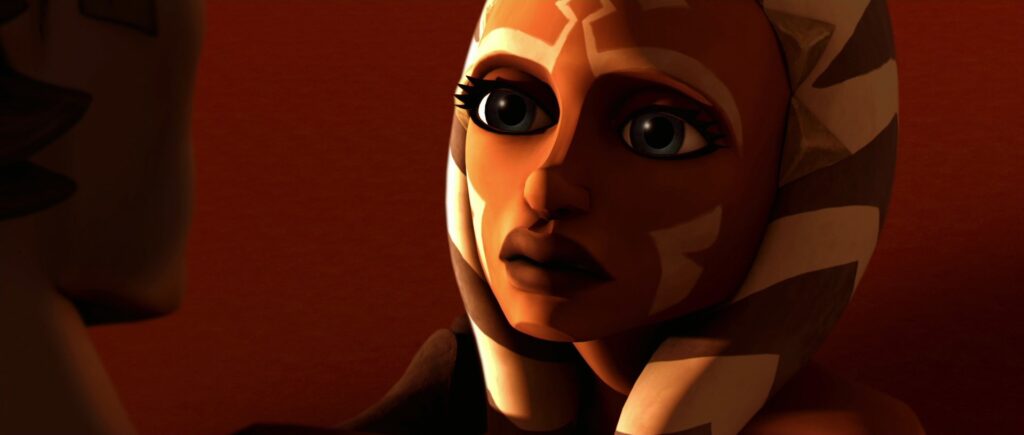
While war takes Anakin away from Padmé the goddess fortifies her connection through padawan Ahsoka Tano. Ahsoka offers Anakin a chance to pass on the better aspects of his Jedi knowledge but she is also not the silent student who obeys every order her master tells her. Her strong spirit not only bring additional strength against the perils they face but also makes the teacher the student, as well. While Anakin is away from the one he would create a family with, Ahsoka becomes a new family for him, away from the dogma of the Jedi while simply trying to survive.
An interesting event occurs during the Clone War, when Anakin, Obi-Wan, and Ahsoka find themselves mysteriously swept away to a place called Mortis. The three of them perceived Mortis as a planet but it exists as a transcendent plane of existence which the Force flows through. The symbolism of their party, when looking at it through the lens of Anakin’s connection to the feminine divine, is very interesting. Ahsoka’s archetypal role is Anakin’s connection to the feminine divine while Obi-Wan is the Jedi’s insistence on adherence to the dogma which pushed Anakin to reject it and Anakin continues to symbolize the hope for balance. Even more interesting, they meet a trio of beings called Force-wielders representing different aspects of the Force: the Daughter (light side of the Force), the Brother (the dark side of the Force), and the Father (the balance of the Force). Eventually, there is a convergence between both parties when looking to Anakin for balance in the Force.
Anakin is thrust into a battle between the light and dark, with each coded as feminine and masculine. When Anakin is able to tame both the Daughter and the Son, it’s symbolic of the balance both the Father and the Jedi seek. While the Daughter doesn’t seek to steer Anakin’s purpose, she does warn him about her brother’s selfish nature. The Father wants Anakin to take his mantle and do the virtuous choice of balancing the light and dark. Just as Anakin was called to the Jedi Order to bring balance to the Force in the physical world, the ethereal realm calls to him to create balance. He’s also visited by a vision of his mother, with Shmi warning Anakin he’s “turned his love into a prison”––the feminine divine calling to Anakin and warning him about the dark forces actively twisting the love he feels for her into obsession.
The mirror of motives is even further underscored when Obi-Wan is given the Dagger of Mortis, the only weapon capable of killing a Force-wielder, by the Daughter to aid the rescue of Ahsoka Tano after her abduction by the Brother. Ahsoka has been corrupted by the Brother and when Anakin finally reaches them. As the battle between all players escalates, the Dagger of Mortis ends up in the hands of the Brother and as he goes to kill his Father, the Sister puts herself in between them, sacrificing herself to protect the balance. In her dying act, she channels her life force to Ahsoka, who is revived after being casually dispatched by the Brother. The light restored the feminine divine.
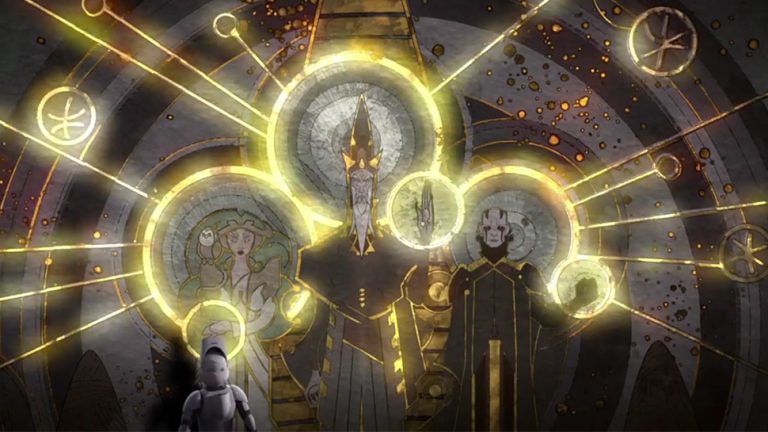
There are so many symbols in this Mortis-arc, but the mirrored intent of the struggle between the light side/feminine divine and the dark side/masculine with the monotheist (the Jedi and the Father) looking for an arbiter in Anakin to resolve and balance symbolizes an internalized dilemma Anakin likely experienced in the course of his Jedi training. When Anakin glimpses his future as Darth Vader, he gives into the darkness because he’s told it’s a pathway to fulfilling a nebulous prophecy he’s been told he would fulfill. The darkness has little trouble convincing Anakin because he’s seen himself reduced to the vessel of fulfilling a prophecy by both the Jedi and the dark side. Anakin is so set in following darkness the only way he is brought out of it is by the Father erasing his memory of the visions the darkness planted. Eventually, Anakin destroys the Son and with the darkness and the light gone, the Father vanishes, taking with him the balance. Whether or not Anakin remembers the dark future awaiting him, the Force has been primed for what is to come.
Moving beyond the events of Mortis, Anakin also sees the archetypal connection to the goddess through Ahsoka severed when she chooses to leave the Jedi Order. After Ahsoka is falsely accused of crimes and dragged through a public trial, hunted by the Republic and the Jedi, she cannot reconcile the betrayal of her order with their offer to return. Anakin watches her leave the Order, again planting the seeds of resentment and mistrust against the Jedi. There is no chance to mourn the loss of his friend, student, and family. It’s right back to the business of being a Jedi and fighting in what must seem to be an endless war.
In Revenge of the Sith, the culmination of every conflict Anakin’s been dealing with consciously and subconsciously come to a head. The story opens with Anakin being prodded by Palpatine to kill the Sith Lord, Darth Tyranus, by Palpatine. When Anakin gives in and beheads the defenseless Sith Lord, Palpatine recalls the moment Anakin acquiesced to his aggressive impulses, reinforcing the acceptability of breaking from the Jedi when necessary. It’s easy to conclude Palpatine has been nurturing a backdoor mentality Anakin has developed, one which whispers when it’s okay to depart from his Jedi code to serve the greater good. While Anakin leaving the Jedi Order to start a new life with Padmé would not be wrong, Palpatine subtly lumps his own corrupt beliefs in with those pure and moral desires Anakin has for life beyond the Jedi dogma.
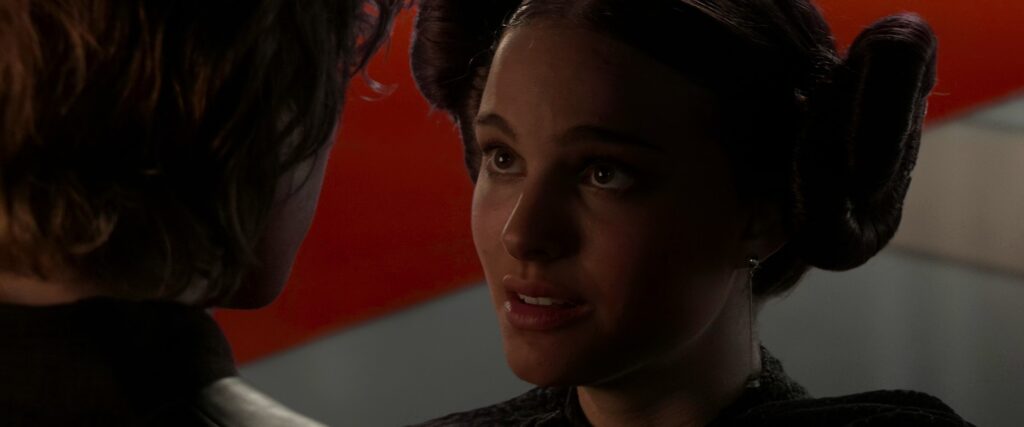
After Anakin rescues both Palpatine and Obi-Wan, he’s reunited with Padmé, who shares she is pregnant. They’ve not seen each other in some time and the shared moment is overwhelming, with the instant thoughts of the roles they are bound to filling their heads with conflicts in their desire to have a family. Anakin, who’s just been able to dismiss the dogma of the Jedi for the sake of murder for the greater good, dismisses their concerns for a much better reason – to celebrate the good news and bask in celebration they haven’t been allowed to due to so many outside forces of the galaxy. The comparison of Anakin’s duel-dismissal is only to demonstrate how successfully Palpatine has been able to compromise Anakin’s thought process when it comes to dismissing the Jedi dogma. Anakin does it here for all the right reasons but Palpatine sees his inroads to convoluting the moral reasons to reject their code for one which will bind him to a new dogma –– that of the Sith.
The joy of this news fades quickly as dreams of Padmé dying in childbirth begin to haunt Anakin. Anakin does not have the luxury of dismissing these dreams as things which will pass in time because they were prophetic when it came to his mother. Once again, Anakin feels the goddess calling out to him through the Force, warning of her demise. Anakin has lost his mother, he’s lost Ahsoka, and at the precipice of beginning a new life as a husband and father, he truly believes he is about to lose Padmé.
When Anakin looks to the Jedi for a sort-of spiritual guidance, they instead give him an order which he feels is exploitive of a friendship he holds dear. When asked to essentially spy on his friend Palpatine, Anakin makes it very clear he’s witnessing the Jedi go off their own reservation of morality. Bearing witness to a malleable set of morals likely adds to the confusion, fear, and anger Anakin feels about the impending death of Padmé. It only further adds to the ease with which Palpatine can manipulate Anakin. The Jedi’s teachings over the past decade are debased in Anakin’s eyes as his teacher Obi-Wan acknowledges his objections but stands by these orders. It also blinds Anakin to the very valid, cautionary points Obi-Wan makes about Palpatine’s maneuvering the Republic further down the road to authoritarianism.
Anakin’s mistrust of the Jedi begins to spill over into his marriage. As disagreements between Padmé and Anakin become more heated, she begins to sense he’s pulling away and hiding his emotions. Anakin’s desire to save Padmé becomes obsessive, all while trying to manage the disturbing expectations of him by the Jedi. Though there is never any moment when Anakin vocalizes this to Palpatine we know his true identity, Darth Sidious, is quite capable of probing minds, especially those he’s set his sights to serve him as an apprentice, so it’s assumed he’s aware of everything. The turn of Anakin is a slow masterpiece in manipulation and this new emotional instability, coupled with the compromise of Anakin’s moral faculties, is the final stroke Sidious has been waiting for.
Palpatine continues to lay the groundwork to break Anakin off from the Jedi. He knows Anakin is already primed to resent the Jedi so it’s low hanging fruit for him. Palpatine introduces the concept of a Sith power capable of granting its user the power to bestow immortality on themself and others, while specifically stating the Jedi consider this “unnatural”. The Jedi dogma kept him from his mother, his best friend/sister/student left because of them, and now it will hold him back from protecting the one he loves. Introducing this idea, which holds Anakin back from an ability to protect not only Padmé but also his unborn child plants a seed Palpatine knows will grow quickly inside of Anakin. The conflict between his authority and the Jedi is one Palpatine knows is coming. It’s important Palpatine makes the line Anakin will need to cross one where the promised a future with Padmé is kept. Palpatine also knows how irrational Anakin can become when Padmé is at risk, tossing aside any adherence to the Jedi dogma. In the moment, Palpatine is confident he will.
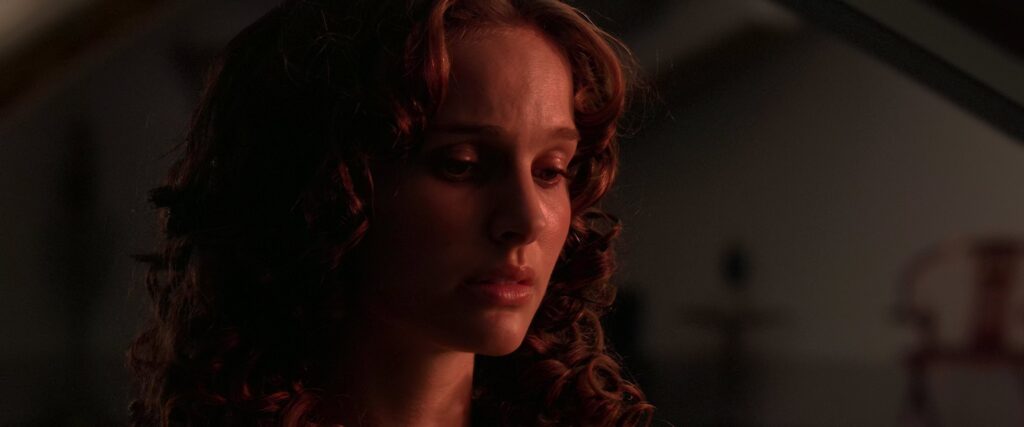
And Anakin does. In one of the most haunting moments of the saga, Anakin and Padmé commune through the Force as they watch the sunset on Coruscant. Anakin, standing in the Jedi Temple and Padmé in her residence. Palpatine even whispers in Anakin’s mind there is no chance of Padmé surviving if he is killed. Anakin has just informed Mace Windu of Palpatine’s true allegiance to the Sith but now he’s conflicted. Which order will deliver him a life outside of the dogma? Who will deliver him Padmé…the Jedi or the Sith? It’s a terrible perspective because he’s now absent of love, focusing only on the possession of the goddess, not what the greater good she will nurture for all in the galaxy.
Anakin joins with him, quickly demonstrating his determination to reject the Jedi to protect his new family by murdering Mace Windu and every Jedi in the temple, within hours of his turn. Anakin quickly falls from a conflicted Jedi trying to balance what is best for his family with the connection he still feels to the Jedi into a murderous, singularly obsessed Sith Lord. Though Palpatine has succeeded in harnessing Anakin’s power in the Force he knows there is still one obstacle in front of Anakin’s complete descent into darkness: Padmé.
As Anakin faced the triad of confrontational forces on Mortis, he faces it again on Mustafar. The goddess, the father, and the darkness come to confront him. Anakin, emboldened by his new powers and defiance of death, offers his hand to the goddess but in doing so exposes how corrupted by power he’s become. While he thinks he’s offering Padmé a throne by his side, she sees he will enforce his intent upon everyone in the galaxy who disagrees with him, her included. When Padmé pleads with him to listen to the good inside himself she believes to still be there, Obi-Wan appears unexpectedly and much to Padmé’s despair, convoluting her final attempt to bring Anakin back to the feminine divine instead with his own divine mandate from the Jedi: Anakin Skywalker is already dead, therefore he must kill Darth Vader. The mistrust Sidious has sown in Anakin boils over, from his distorted perspective the goddess and the Jedi have turned against him. He turns against Padmé, attempting to murder her with his powers until Obi-Wan presents himself as a more pressing target. In this moment, Anakin has lost faith in the goddess, the Jedi, and himself. He’s blinded, ready to let go of everything in this moment for a purpose he doesn’t even know. Not only has Anakin lost faith in Padmé and the Jedi, he feels their loss of faith and a new abandonment. All Anakin’s anger, confusion, and hate are distilled into a sentiment one of his descendants will later make: “Let the past die. Kill it if you have to.”
In a haymaker duel with his former teacher, Anakin vocalizes all the mistrust he’s felt toward the Jedi. With each pronouncement, Anakin Skywalker slips further away and Darth Vader rises up to take his place. As irrationality grips what is left of Anakin, he makes a fatal miscalculation in the assault on his master, who uses it to sever all his limbs and render him helpless. The Jedi have now rejected Anakin leaving him in darkness and burned alive in a horrific parody of the same flames he saw consume the corporeal corpse of Qui-Gon Jinn as a child.
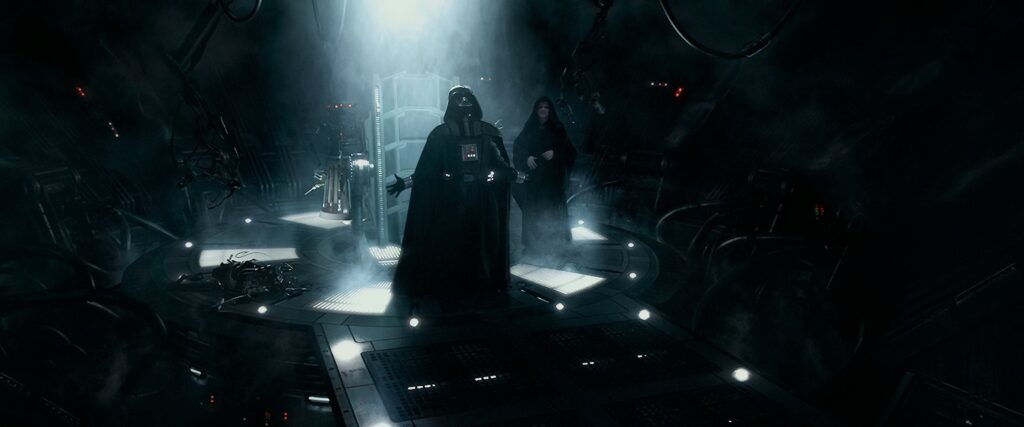
Clawing from the ashes of Anakin’s remains, Darth Vader is given a lifeline through technology and the new, hateful powers instilled on him through Darth Sidious. As Darth Vader rises in his new armor, a physical mask in the absence of the emotional one Anakin was forced to wear most of his life, he calls out to the goddess but she is gone. The prophecy the Jedi told him as a boy became self-fulfilling: love turns to obsession, obsession turns to fear, fear turns to hate, hate turns to suffering. The hell in which Darth Vader will live is one where not only is there a belief the goddess is dead, but that he killed her.
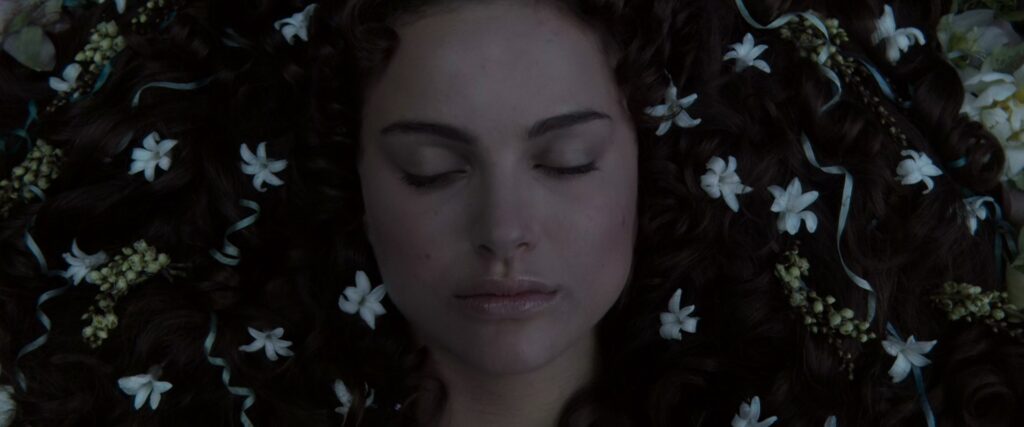
What little is left of Anakin Skywalker and whatever is left of what Padmé, Shmi, and Ahsoka taught him through the feminine divine has now entered the twilight in its next cycle, purgatory. This will be explored in the second part of this series.


